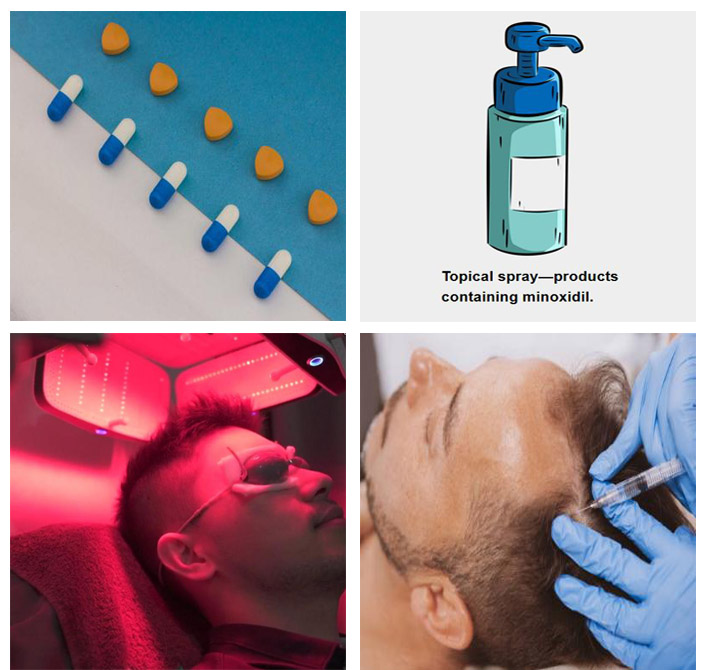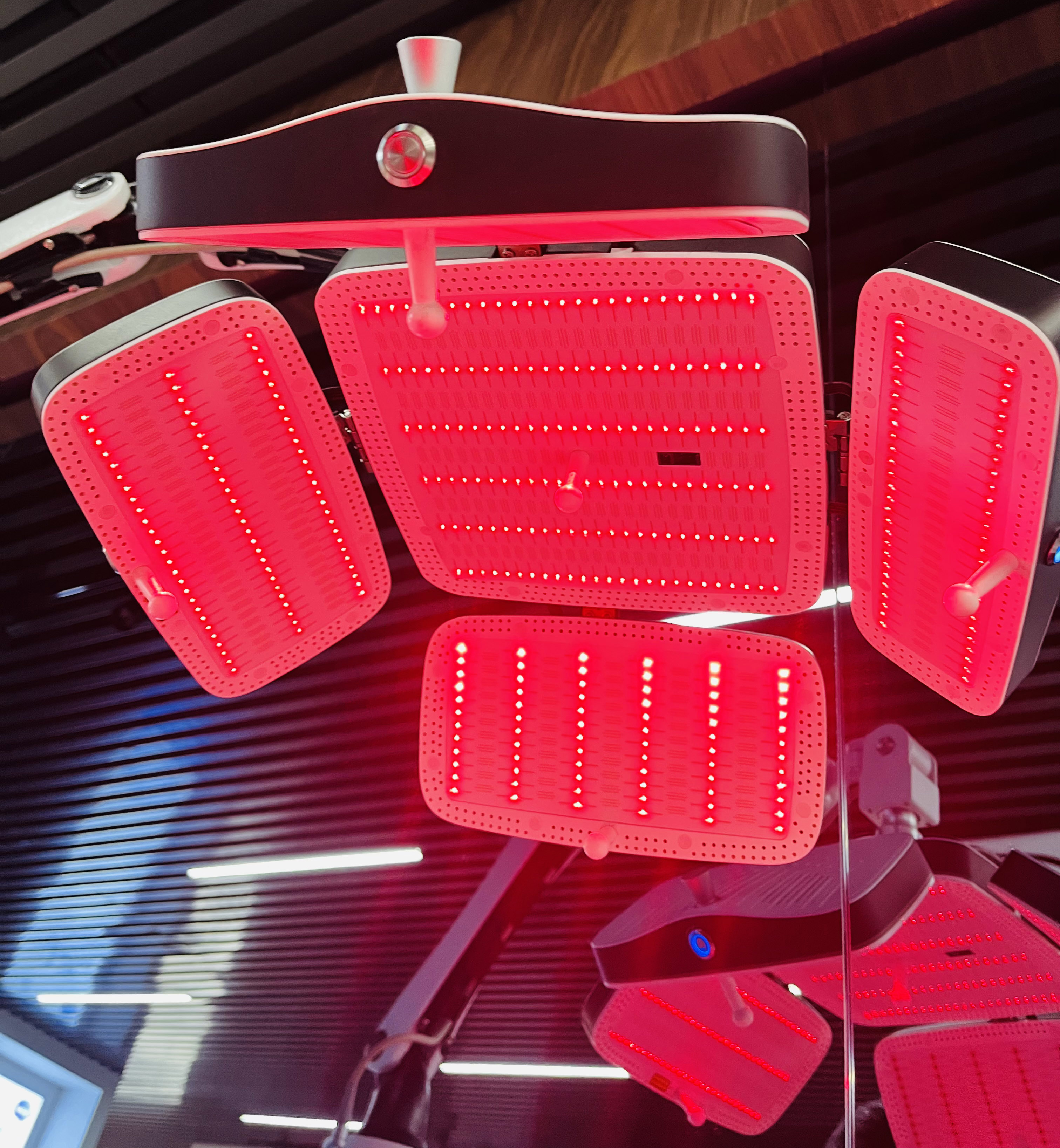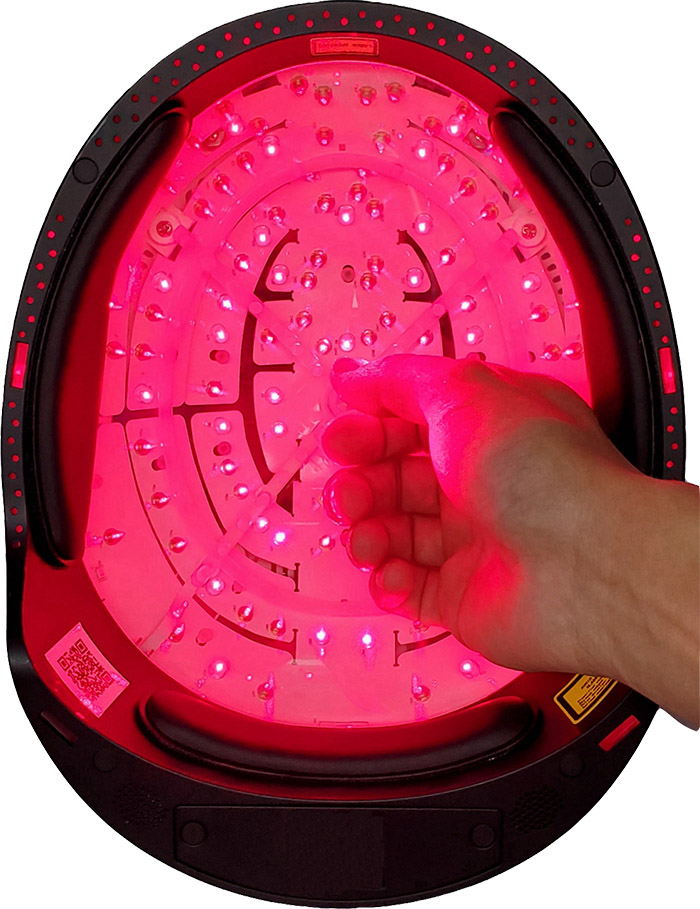Hair Loss and treatment

Overview
The issue of alopecia has begun to afflict many individuals worldwide. It is commonly categorized into seborrheic alopecia, neurogenic alopecia, cicatricial alopecia, and pathological alopecia, among others. Presently, the market is replete with various hair regrowth products, both ingestible and topical. However, their ultimate efficacy remains uncertain, often falling short of providing definitive therapeutic outcomes. Medications primarily aim to suppress dihydrotestosterone secretion, yet their effectiveness is limited and may predispose individuals to cardiovascular and cerebrovascular ailments. Conversely, hair transplantation is not universally suitable, given its high cost and associated surgical risks.
Currently, available on the market, are low-level laser therapy (LLLT) devices utilizing soft laser technology with a wavelength of 650-670nm. These devices, commonly referred to as soft lasers, exert no adverse effects on the human body and belong to the realm of physical therapy. They hold the promise of addressing hair regeneration issues from the very roots.
A market survey on the approach of individuals suffering from hair loss towards this prevalent condition.
Significant stress, genetic predisposition, abnormal immune responses, and insufficient sleep have emerged as primary factors in feedback from alopecia surveys. Among the causes of alopecia, stress has become a predominant factor, while the hereditary nature of alopecia has also triggered a significant rise in cases. Immune issues and sleep deprivation have likewise led to varying degrees of hair loss. Although there is a heightened awareness of alopecia, there exists considerable misinformation regarding hair care and maintenance.
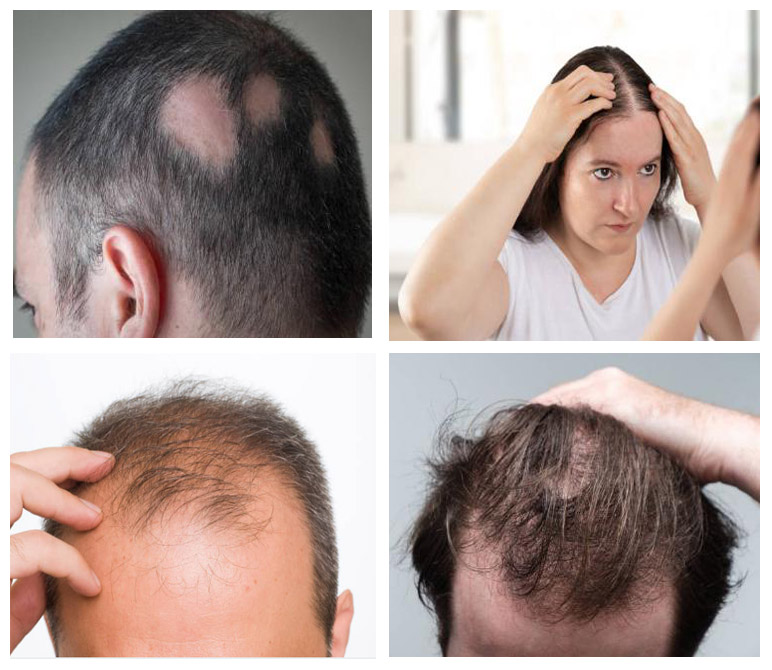
Approximately 53% of individuals experiencing hair loss have attempted preventive and regrowth methods in the past year. Around 60.3% of those affected employ hair care products at home, with only 3.5% undergoing regular professional hair care. Additionally, 4.8% seek intermittent hair maintenance at hair salons, while 31.4% believe that regular washing is sufficient for hair care.
The primary treatment modalities include
On a global scale, there are four proven methods for effectively treating hair loss: oral medication, topical sprays, low-level laser therapy, and microneedling therapy. Let's delve into the advantages and disadvantages of each method for comparison.
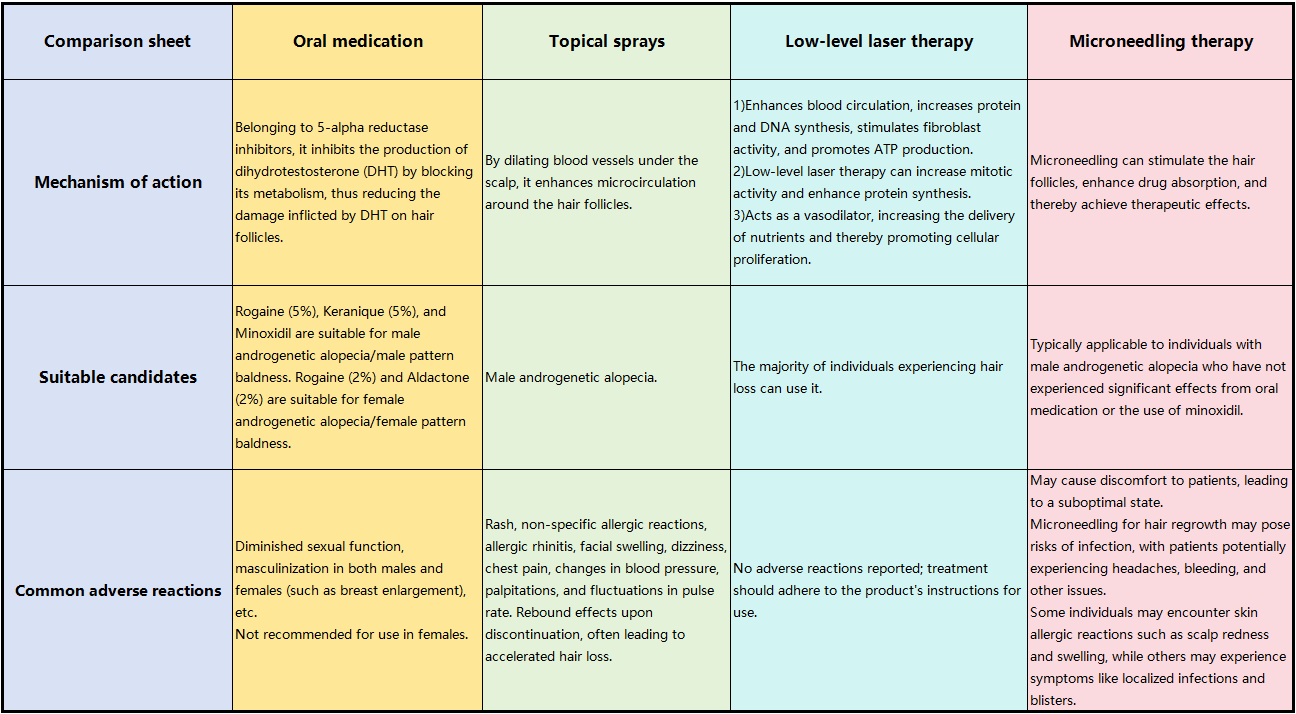
In summary, low-level laser therapy is relatively safe, widely applicable, and yields the most significant results among hair regrowth therapies.
Extensive research has confirmed that low-level laser therapy (LLLT) can alter cellular oxidative properties, accelerate electron transfer, regulate gene expression controlling DNA manufacturing and repair, and induce the release of nitric oxide from cellular catalytic centers. These phenomena result in increased blood circulation, enhanced protein and DNA synthesis, stimulation of fibroblast activity, and production of ATP, among other effects. Through many years of clinical experience and research, LLLT has been shown to increase mitotic activity and protein synthesis, exert vasodilatory effects to enhance nutrient delivery, thereby promoting cellular proliferation.
LLLT using low-level soft laser technology can facilitate changes in hair follicles.
The hair papilla within the hair follicle contains abundant melanin, which specifically absorbs the energy of soft laser, forming the physical basis for follicle activation.
After soft laser irradiation, scalp tissue shows a 54% increase in scalp blood flow and enhanced oxygen intake, indicating accelerated metabolism.
Enzymatic activities associated with hair growth, such as cytochrome oxidase and heparinase, increase. The growth intensity of nerve growth factor (NGF) increases fivefold, facilitating the rapid transition of hair follicles into the growth phase.
Molecular biology studies have also confirmed that soft laser enhances the genomic expression of numerous proteinases associated with hair growth in scalp tissue.
LLLT using low-level soft laser technology cannot alter gene sequences but can enhance the specific genomic expression related to hair growth, thereby promoting hair regrowth.


